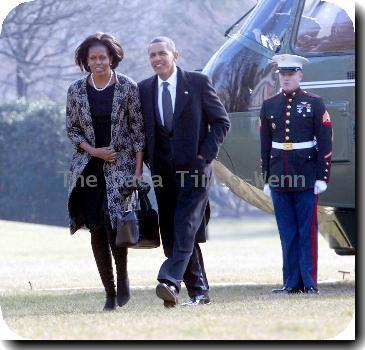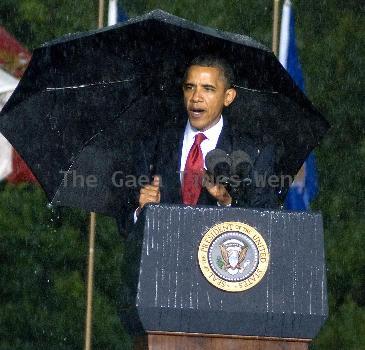US-led troops advance in Taliban green belt stronghold
By Todd Pitman, APWednesday, September 15, 2010
US forces advance in Taliban green belt stronghold
ASHOQEH, Afghanistan — U.S. Army Capt. Brant Auge swept his hand across a satellite map of southern Afghanistan and pointed to a dark band of river-fed vineyards, pomegranate groves and marijuana fields arcing through an otherwise barren valley.
The band is what U.S. troops in this Taliban stronghold call “The Green Zone” — a fertile belt of vegetation crawling with insurgents targeted in a U.S.-led operation. The operation, which began slowly on Wednesday, could mark one of the most critical stages of the nearly nine-year war.
American commanders are hoping to clear the region of guerrillas and destroy their main fighting positions in the weeks and months ahead before President Barack Obama makes a critical assessment in December of the effectiveness of the 30,000-man surge. Success or failure here could determine the course of the war.
Many villages in the Green Zone — not to be confused with the far better known protected area in Baghdad, Iraq, that takes the same name — have been “largely abandoned and are only being held by Taliban fighters,” said Auge, a 30-year-old company commander from Ocean Springs, Mississippi.
In others, Taliban militants operate so freely that aerial drones have spotted them at checkpoints searching and interrogating passers-by to find out “who is supporting the Americans,” Auge said.
Coalition forces, he said, had not traveled down one road near his outpost since April. When they did, they lost five vehicles to roadside bombs.
Troops from the U.S. Army’s 101st Airborne Division began flooding the region in May in a bid to disrupt the guerrillas’ operations and block them from staging attacks into Kandahar city. Kandahar’s security is considered a linchpin of American strategy to win the war. But the militants, some from neighboring Pakistan, have brought in hundreds of fighters of their own and stepped up attacks, U.S. officers say.
The fight will be tough. Sympathy and support from the Taliban runs high here in Zhari district, where Taliban leader Mullah Omar’s radical Islamic movement was born 16 years ago.
Auge said the Taliban have set up “shadow courts and shadow governments” throughout the area, and “if people have a problem, that’s who they turn to because they don’t have anybody else.”
American commanders are hoping to weaken the Taliban by establishing ties between residents and their nascent district government — with which most have little or no contact for years. “We have to give them that other option, show that the Afghan government can provide for their needs,” he said.
But even that task has been difficult. Many residents don’t want to talk to U.S. forces — either because they’re afraid of heavily armed American troops moving through their villages, afraid Taliban fighters who threaten to kill them, or because they genuinely sympathize with the insurgency.
Zhari’s local government is largely a one-man show, and the chief, Kareem Jan, is a marked man. He has survived at least three assassination attempts since taking on the job in late May — the latest last week when gunmen ambushed his convoy on the main tarmac highway that crosses the region, killing one of his guards before escaping with one of his vehicles.
In recent months, American commanders say they’ve reduced ambushes along Highway 1 by cutting down trees and destroying insurgent fighting positions.
North of the road is wide open desert where insurgents have difficulty hiding. To the south lies the Green Zone, and “most villages in the south are Taliban-controlled,” Auge said.
The lush belt’s abundant undergrowth, which straddles the Arghandab River in an arc west and northwest of Kandahar, can conceal guerrilla fighters so well that U.S. troops often see only muzzle flashes in the shadows. Grape fields are strung over 4-foot-high mud walls that substitute as highly effective fighting positions.
Army engineers will use chain saws to cut down more trees the guerrillas use as cover, Auge said. Bulldozers and explosive charges may also be used, according to other officers.
Taliban fighters have dug small defensive berms in some spots and planted defensive pressure-plate bombs around their compounds. They have used tunnels in neighboring mountains. And troops have discovered hidden “shelves” inside water wells they believe have been used to store weapons and people.
“That’s their terrain,” said another company commander, Capt. Nick Stout, standing atop a nearby hilltop outpost overlooking the strategic valley.
“It’s single canopy jungle in there,” said the 27-year-old native of Lake Orion, Michigan. “That’s where their bed-down locations are, that’s where their weapons are being cached at, that’s the ground they’re using to traffic personnel.”
Pointing to one main thoroughfare in his area of operations, Stout said grimly: “That road is straight-up owned by the Taliban.”
Many U.S. outposts, including Auge’s, are scattered across the green band; but patrols around them have been limited and they come under frequent attack.
On Saturday, U.S. troops south of the town of Senjeray spotted insurgents holed up in a series of compounds. As gunbattles echoed across the valley, troops called in air support. A-10 fighter jets, Kiowa choppers and Apache helicopter gunships circled the skies, repeatedly diving down to strafe targets.
The fighting stopped after jets dropped two bombs — one 500 pounds, the other 1,000 — which left giant columns of dark brown dust clouds mushrooming above the battle zone. As many as 14 insurgents were killed, Auge said.
Clearing insurgents from the valley, however, has proven difficult.
NATO forces have launched major clearing operations in Zhari before — in 2006 and again in 2007. Despite initial successes, Taliban fighters trickled back in.
Auge said the latest operation will be different because the coalition finally has the manpower to get the job done and deploy in areas where “nobody’s been able to get in” so far.
“We’re starting to push into the zones now because we have the combat power we need,” Auge said. “We’re not going to occupy villages. But we have enough to maintain a presence and keep soldiers in the area so Taliban do not come back in.”
British Maj. Gen. Nick Carter, who oversees NATO forces in the south, said one of the targets in Zhari on Wednesday was the village of Makuan, which U.S. commanders expect to clear within days. Carter said troops had “breached some IED belts” adjacent to the village, referring to bombs coalition forces often call improvised explosive devices.
But progress was clearly slow.
U.S. forces, he said, had gone only “slightly farther than we’ve gone before.”
Tags: Afghanistan, Ashoqeh, Asia, Barack Obama, Central Asia, Guerrilla Warfare, Kandahar, North America, United States

